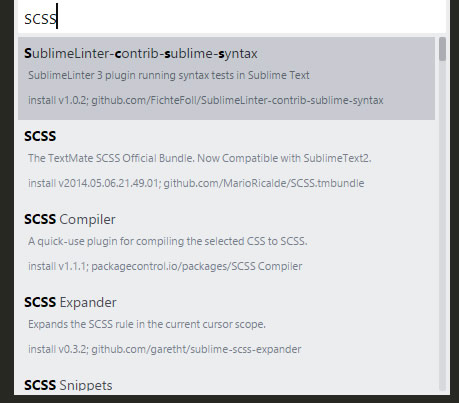

- #I CANT ACCESS PACKAGE CONTROL SUBLIME TEXT 3 FULL#
- #I CANT ACCESS PACKAGE CONTROL SUBLIME TEXT 3 CODE#
Src/print.Menus Icon Bar Menu Icon Accordion Tabs Vertical Tabs Tab Headers Full Page Tabs Hover Tabs Top Navigation Responsive Topnav Split Navigation Navbar with Icons Search Menu Search Bar Fixed Sidebar Side Navigation Responsive Sidebar Fullscreen Navigation Off-Canvas Menu Hover Sidenav Buttons Sidebar with Icons Horizontal Scroll Menu Vertical Menu Bottom Navigation Responsive Bottom Nav Bottom Border Nav Links Right Aligned Menu Links Centered Menu Link Equal Width Menu Links Fixed Menu Slide Down Bar on Scroll Hide Navbar on Scroll Shrink Navbar on Scroll Sticky Navbar Navbar on Image Hover Dropdowns Click Dropdowns Cascading Dropdown Dropdown in Topnav Dropdown in Sidenav Resp Navbar Dropdown Subnavigation Menu Dropup Mega Menu Mobile Menu Curtain Menu Collapsed Sidebar Collapsed Sidepanel Pagination Breadcrumbs Button Group Vertical Button Group Sticky Social Bar Pill Navigation Responsive Header Now let's make sure we have something to debug, so let's create an error in our print.js file: Be sure to check them out so you can configure them to your needs.įor this guide, let's use the inline-source-map option, which is good for illustrative purposes (though not for production): There are a lot of different options available when it comes to source maps. If an error originates from b.js, the source map will tell you exactly that.
#I CANT ACCESS PACKAGE CONTROL SUBLIME TEXT 3 CODE#
In order to make it easier to track down errors and warnings, JavaScript offers source maps, which map your compiled code back to your original source code. This isn't always helpful as you probably want to know exactly which source file the error came from. For example, if you bundle three source files ( a.js, b.js, and c.js) into one bundle ( bundle.js) and one of the source files contains an error, the stack trace will point to bundle.js. When webpack bundles your source code, it can become difficult to track down errors and warnings to their original location. const path = require('path') Ĭonst HtmlWebpackPlugin = require('html-webpack-plugin')

Let's start by setting mode to 'development' and title to 'Development'.

The tools in this guide are only meant for development, please avoid using them in production! Before we continue, let's look into setting up a development environment to make our lives a little easier. If you've been following the guides, you should have a solid understanding of some of the webpack basics. This guide extends on code examples found in the Output Management guide.


 0 kommentar(er)
0 kommentar(er)
